

2023 ENVIRONMENTAL REPORT

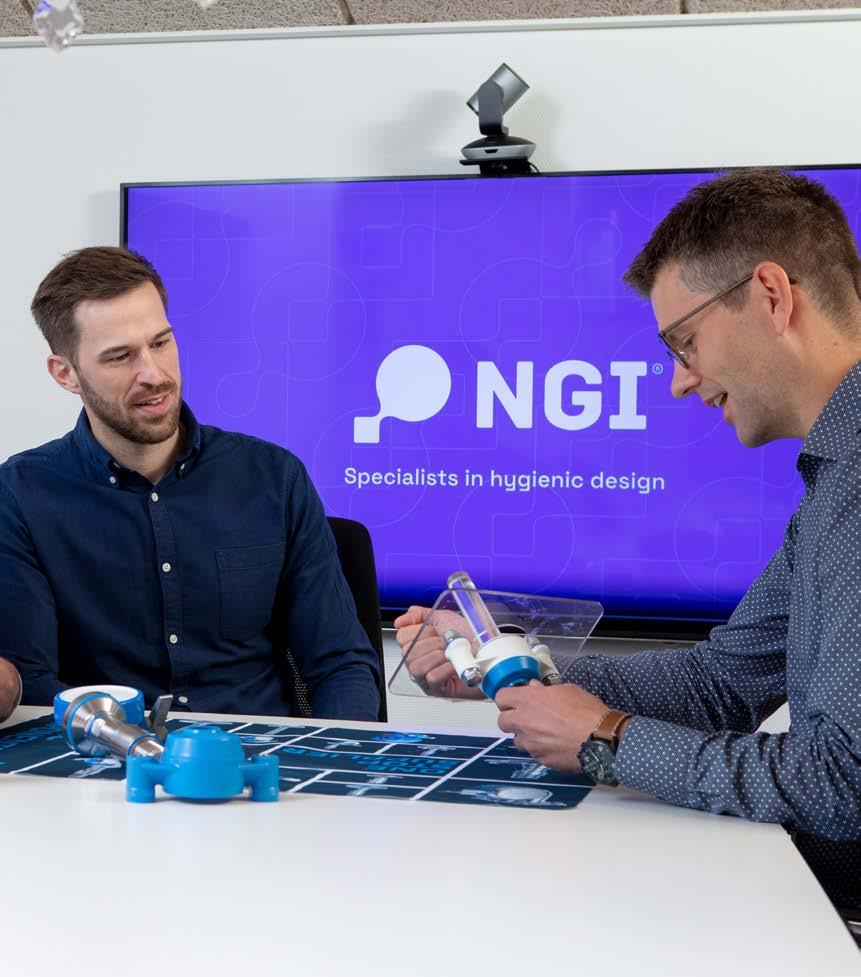

INTRODUCTION
Cultivating environmental accountability
At Moovimenta, we pledge to be transparent and open in our communication about our environmental performance, whether we are achieving progress or facing challenges. Our goal is to make our environmental report both readable and accessible, continuously improving data accuracy.
This report highlights our environmental efforts and impacts for the year 2023 (January 1 st – December 31 st). It covers all Moovimenta Divisions: Habasit, Rossi, NGI, and TRAPO, each operating under its own brand.
We address key environmental aspects relevant to our business, such as greenhouse gas (GHG) emissions (Scope 1 and 2), volatile organic compound (VOC) emissions, energy use, water use, and waste generation.
Your feedback and comments are welcome to help us improve.
MOOVIMENTA: A BRIEF OVERVIEW
Our mission and values
Picture a world where industries harmonize with nature, where each innovation fosters a healthier planet and a brighter future for us and generations to come. At Moovimenta, sustainability isn’t just a goal; it’s the guiding principle behind everything we do. Our commitment to sustainability drives us forward, from reducing carbon footprints to improving operational efficiencies.
At Moovimenta, our mission is to accelerate the transition to a sustainable, smarter, and safer industrial reality. We believe in industrial growth to benefit people without draining the planet. We are here to make our customers’ equipment and processes more sustainable, smarter, and safer.
Our values
Entrepreneurship
is our passion – we foster a spirit of initiative, ownership, and commitment at all levels.
is our mindset – we are committed to providing outstanding customer experiences with best-in-class products and services. Quality you can trust
Continuous improvement
is our energy – we are continuously moving to the next level of performance.
Collaboration
is our leverage – we create synergies and learning experiences through teamwork and open interaction.
Organizational pride
is the evidence of our success as an employer.
Ethical standards
is our credo – we respect diversity and strive for sustainability in all areas.

Driving industrial innovation
Moovimenta drives innovation and delivers top-quality components and services for the manufacturing industry through our four dedicated companies.
We are committed to transforming industrial processes by enhancing sustainability, intelligence, and safety. Our Corporate Accelerator serves as the hub for spearheading and coordinating innovation across the Moovimenta group. By leveraging the distinct expertise within each of our divisions, we foster collaboration that leads to significant improvements in our customers processes.
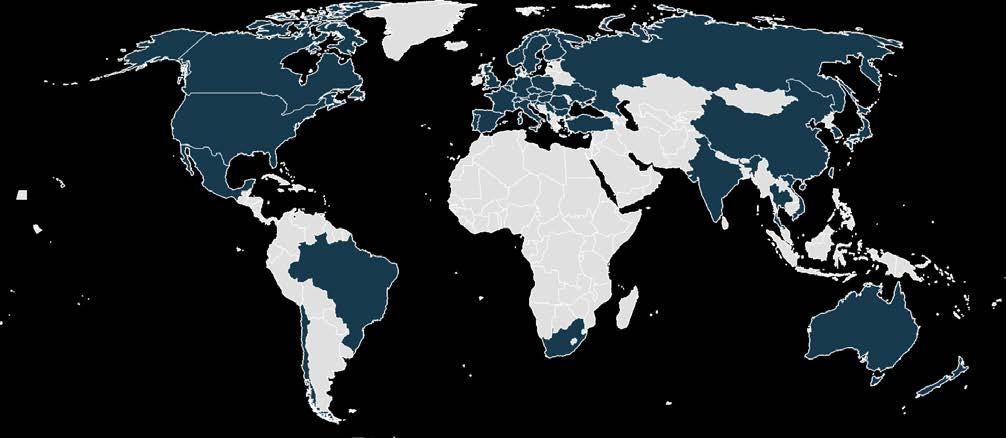

36,000+
Interview with our group CEO
In the following interview, we have the privilege of gaining insights directly from our Group CEO, Andrea Volpi on Moovimenta’s sustainability journey. Andrea shares personal reflections, strategic visions, and organizational perspectives on sustainability.

Andrea Volpi Group CEO
Can you share a personal experience that sparked your passion for sustainability?
Unless we are blind or choose to turn our heads, the threats to our planet and civilization are strikingly evident along our daily lives. Imagine developing countries where beautiful natural landscapes are no longer covered by waste and litter. Picture children breathing polluted air, now playing outdoors and enjoying the fresh air, with a long life ahead of them. This is what inspires
me and drives my passion for sustainability: a change for a better reality.
How do you envision the future of sustainability at Moovimenta, and what key steps are we taking to achieve this vision?
Individually, we are only tiny particles in the sustainability universe, but collectively, we can create significant change. I believe through innovation, we can make sustainability affordable and accessible for everyone. This is why we have put sustainability at the core of our Corporate Accelerator mission. By focusing on innovation, we can develop solutions that protect our planet and enhance our operations and products.
What are some of the most significant sustainability achievements across Moovimenta’s divisions that you are particularly proud of?
I am neither proud nor satisfied with what we have achieved until now because I know our potential is far greater. Several good initiatives are ongoing but often live as additional workload that interferes with other short-term tasks. We must continue building momentum in the organization to install the sustainability perspective transversally across
our business processes so that it becomes intrinsic to our way of doing business. Our greatest achievements lie ahead.
Everybody’s life aspiration should aim to leave a better legacy to our beloved than the one we inherited from our predecessors.
How do you balance the economic, social, and environmental aspects of sustainability in Moovimenta’s strategic decisions?
Sustainability is a choice based on principles and values, it implies compromising on other areas, sometimes at the expense of profit, at least in the shorter term. In this sense, the clear commitment and support of our Shareholders is a fundamental asset and pre-requisite to succeed in the longer term.
How do you foster a culture of sustainability and innovation among the leadership team and employees at Moovimenta?
A s per the other core values, I start with selecting leaders who share the willingness to
drive sustainability and are able and willing to walk the talk. My role is to help and enable them to mobilize the organization towards this goal.
What message would you like to convey to Moovimenta employees, partners, and clients regarding our commitment to sustainability?
Everybody’s life aspiration should aim to leave a better legacy to our beloved than the one we inherited from our predecessors. In the same way we help our children to grow healthy and happy, to set up their home, to nurture their family, we should understand that all this is influenced by the environment they will live in, an environment that we have contributed to making worse. But we are still in time to do something to improve the situation before it is too late. We do not want to be remembered as the generation that destroyed the planet. It is time to give back to them and to the planet. Together we are still in time to make a difference.
Committing to sustainable development goals
Our sustainability strategy follows the United Nations Sustainable Development Goals (SDGs) and the United Nations Global Compact (UNGC) principles. Why these goals?

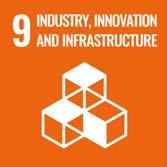
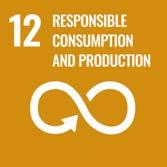
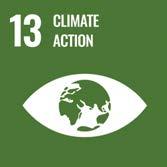
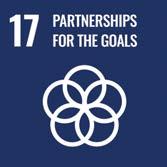
Promoting inclusive economic growth
Commitment: We believe in economic growth that is sustainable, inclusive, and provides decent work opportunities for all without harming people or draining the planet.
Actions: Implement fair labor practices across the entire value chain, ensure safe working conditions for all employees, and foster employee development.
Innovating for sustainable solutions
Commitment: We commit to challenging our operations and supply chain to focus our innovation activities in the field of sustainable solutions.
Minimizing environmental footprint through sustainable practices
Commitment: We prioritize responsible resources consumption to reduce our environmental footprint and promote sustainable and ethical production.
Actions: Invest in innovative technologies that will improve the conditions of people without harming the planet and enhance industrial processes.
Actions: Optimize energy, water and raw material use, reduce waste generation, promote circularity within our production and fabrication processes and implement sustainable procurement practices.
Leading climate action and resilience
Building partnerships for sustainable development
Commitment: We are committed to achieving Carbon Net Zero by 2030 and promoting climate-resilient practices in our operations and supply chain.
Actions: Reduce greenhouse gas emissions on a yearly basis, improve energy efficiency, and support renewable energy initiatives.
Commitment: We are committed to working with our customers, suppliers, and other stakeholders to promote sustainable development.
Actions: Collaborate with stakeholders across our value chain and engage in community partnerships.

Introducing our supplier code of conduct
At Moovimenta, sustainability begins with our commitment to responsible sourcing. We ensure that our products meet high standards of ethics and quality while reducing our upstream environmental impact. In line with the principles of the United Nations Global Compact (UNGC), our Supplier Code of Conduct (SCC) sets clear requirements for suppliers, marking the first crucial step towards delivering sustainable solutions to our clients.
Scope: Applicable to all suppliers, both direct and indirect.
Key principles:
• Human rights
• Fair labor practices
• Environmental responsibility
• Zero tolerance for corruption
STEPS TOWARDS OUR GOALS
STEPS TOWARDS OUR GOALS
Enhancing environmental data quality for CSRD compliance
Data accuracy and reliability are crucial for informed decisionmaking. That is why we commit to improving our data collection and quality each year. By ensuring our strategies and actions are based on precise and trustworthy information, we can rethink industrial processes and make smarter decisions.

Our journey
2020
Initiated gathering key environmental data for main sites: GHG emissions (Scope 1 and 2), VOC emissions, energy use, and water use.
2021
Extended data collection to all sites with more than 5 FTEs, retroactively from 2020-2021.
2022
Initiated collecting data on combustibles for company vehicles to complete scope 1 emissions.
2024
More than 90% of our sites with company vehicles now report fuel consumption, and we aim to reach 100% in the next report.
Started tracking hazardous and nonhazardous waste data and monitoring operational, canteen, and office waste separately. Began computing scope 3 emissions, aiming for full site coverage.
2026
CSRD Reporting for five entities in Moovimenta.
Achieving carbon net zero by 2030
Achieving carbon net zero for Scope 1 & 2 emissions by 2030 is a key target in Moovimenta’s climate strategy, aligned with SDG 13: Climate Action. This ambitious target reflects our commitment to respond to the global call to address climate change and promote sustainable practices throughout our operations.


Key initiatives
1
Energy efficiency improvements and operational optimizations
Actions: Upgrading to energy-efficient equipment and systems. Implementing best practices and technologies to optimize processes.
2
Renewable energy integration
Actions: Transitioning to renewable energy sources such as solar, wind, and hydropower. Investing in solar plant installations.
3
Fleet electrification
Actions: Promoting the use of electric and hybrid company vehicles instead of fuel vehicles.
Progress and milestones
2020
Defined 2020 as the baseline year and started collecting data on an annual basis.
2021
Transitioned our main sites at Habasit, NGI, and TRAPO to renewable electricity sources. Commissioned the first solar power roof plant at Habasit.
2022
More than doubled our total renewable energy consumption compared to 2021.
2022–2023
Commissioned three more solar installations across Habasit and a small-scale solar plant at Rossi. Replaced several internal combustion engine vehicles with electric ones.
2023
Achieved a 14% reduction in carbon footprint (scope 1&2) compared to the 2020 baseline, despite the inclusion of scope 1 emissions from company vehicles starting in 2022.
2030
Goal to achieve carbon net zero for scope 1 and 2 emissions.
Interview with NGI CEO
In the following interview with Jan Nygaard, CEO of NGI, we had the opportunity to gain insight into his organizational perspectives on sustainability.

of water, energy, and cleaning agents, making their operations more sustainable while reducing the risks of contamination.
In our own production facility, we constantly search for ways to reduce our impact, improving the sustainability of our operations. We use recyclable materials,
When people feel that they are included and a part of a community, they are also more likely to embrace new initiatives.
prioritize the use of energy from renewable sources and progressively work to reduce waste addressed to incineration or landfill in favor of recycling - landfill waste has fallen from 17% in 2020 to 1% in 2023.
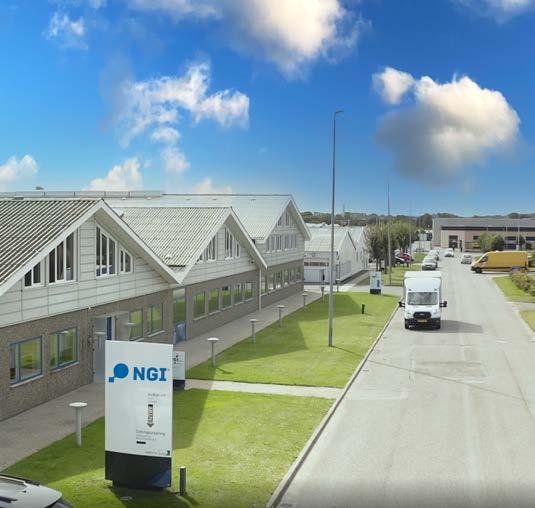
How does NGI integrate sustainability into its core values and operations?
At NGI, we often use the phrase “hygiene is at the heart of everything we do and everything we believe in”: when it comes to our solutions, hygiene rhymes with sustainability. The hygienic solutions we design and manufacture, have a direct sustainability value: by using our solutions, our customers reduce their use
How do you ensure that sustainability efforts are effectively communicated and embraced by all employees?
Through constant communication: I strongly believe in the power of honest and direct communication across the organization. As the CEO, I created and keep a workplace culture where employees and managers can feel comfortable being completely open, honest, and transparent with one another. In addition to the necessary formal meetings, every day
I walk through the production area and offices to talk to our employees about activities and projects. By openly sharing their challenges and ideas, they play an important role in de fining new initiatives. When people feel that they are included and a part of a community, they are also more likely to embrace new initiatives. A healthy, inclusive working environment has always been part of our culture; thus, a sustainable mindset is a natural extension of our daily and longterm operations for both management and employees.
Jan Nygaard NGI CEO
NGI, Denmark
NGI is a very interesting partner for us since their innovation within hygienic design allows us as a brand owner to specify hygienic EHEDG-certified levelling systems.
Sebastien Ducatteeuw Mechanical Engineer & Project Manager, Barry Callebaut
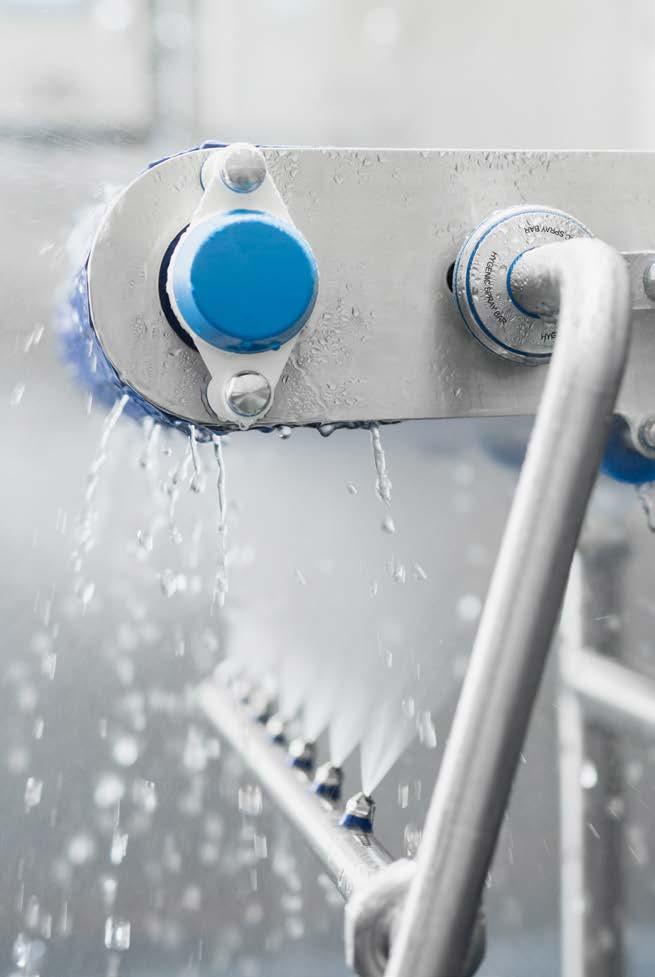
NGI, your partner in hygienic design
NGI is much more than just a supplier of stainless-steel components. We believe that delivering high quality products on time is not sufficient to be successful. We want to build collaborative relationships with our customers with the authentic intention of creating real value.
At NGI we aim to help our customers:
• Minimize the risk of cross-contamination in production environments.
• Minimize the use of water and cleaning detergents.
• Enhance their sustainability profiles and future-proof their production plants.
We invest 15% of our profits in R&D and are committed to innovating new products that are more sustainable than what the market offers today:
• New products need to have a longer lifetime. Our products are made of high-quality materials which means they have a longer lifetime than corresponding components.
• New products must be easier to clean and save valuable water resources.
• New products must be highly recyclable. 80% of our products can be recycled. We are continually working to increase this percentage.
Hugo Durado &
NGI IN BRIEF
Our world of sustainable products and solutions
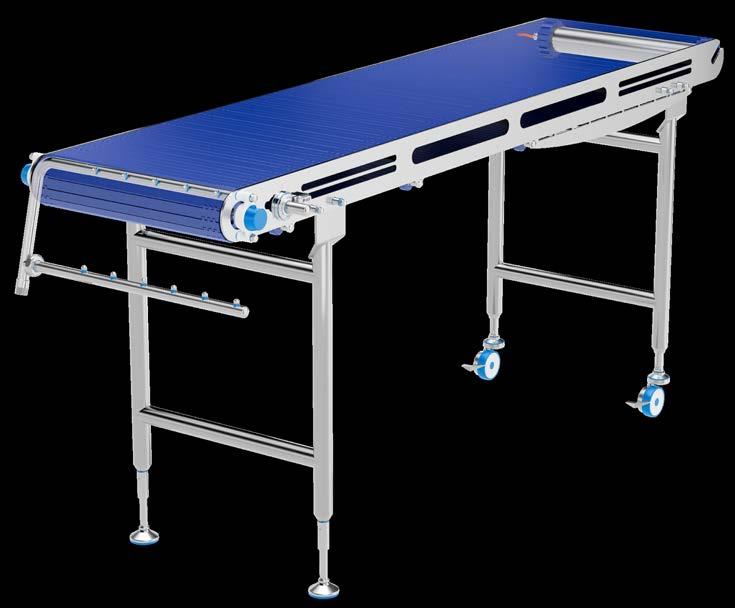
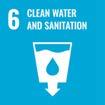
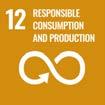
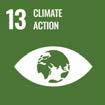
1. Bearing houses
Fitted with ceramic bearings will extend the lifetime 4–8 times
Reduces downtime and energy-loss
The world’s only USDA, EHEDG and 3A for high food safety
Minimized use of water and cleaning detergents
Lubrication-free eliminating grease in wastewater and increasing production safety
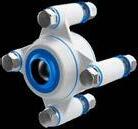

2. Castors
Powerful easy-clean design minimizing the use of water and cleaning detergents
Mechanics 100% integrated minimizing bacteria accumulation
Minimized cross-contamination and maximized food safety
3. Synchronous drum motors
Oil free minimizing the risk of oil leaks
Lower energy consumption
Higher motor efficiency and thus less power loss
Enhanced food safety
4. Levelling feet
Reduced cleaning time, water usage and electricity costs
It takes 28% more resources to reach the same level of cleanliness on a fully-threaded machine foot
Enhanced food safety with triple-certified options



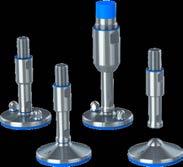


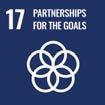
PARTNERING FOR PROGRESS
NGI and Dueholm Solution’s focus on energy-saving measures
Dueholm Solution – part of dht-group.dk – designs and develops innovative conveyor systems and equipment for production companies with high demands for quality and hygiene. This includes a focus on finding future-proof and sustainable solutions for their clients.
In collaboration with NGI, Dueholm Solution is currently examining the energy savings potential of using a synchronous drum motor compared to an asynchronous standard gear motor. Embracing a common goal, we are dedicated to seeking out energy-efficient alternatives to conventional conveyor systems.
Results
The comparative analysis focuses on key parameters including operating time, torque, speed, and load distribution. Preliminary findings demonstrate significant energy savings with the synchronous drum motor, highlighting its potential for reducing operational costs and environmental impact.
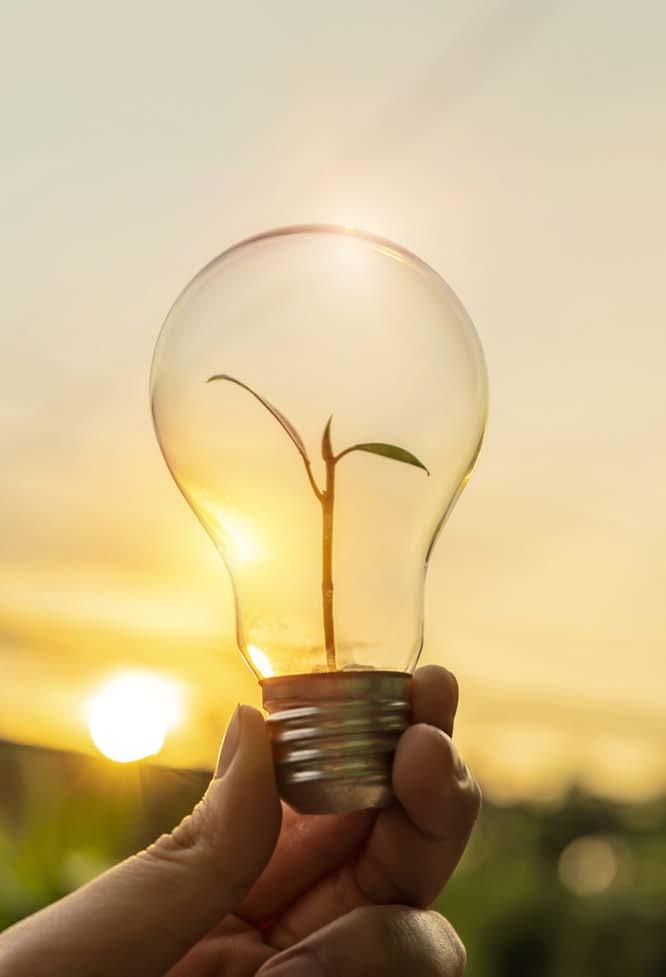

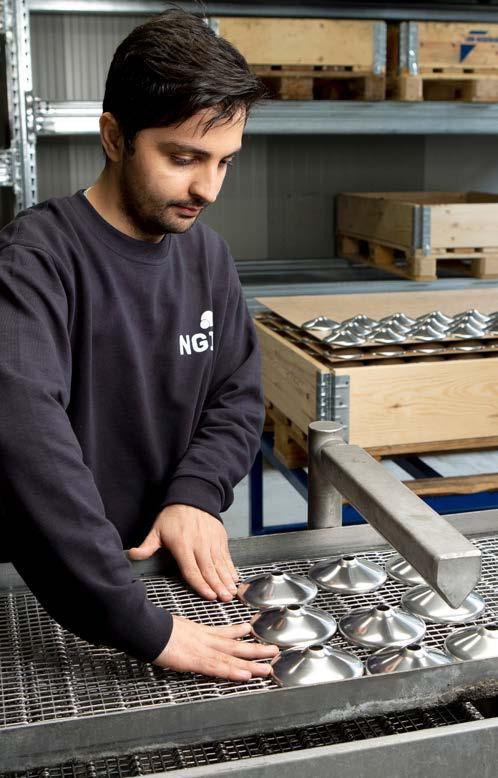
NGI environmental impact assessment
For the past four years, we have been collecting comprehensive data on energy use, greenhouse gas (GHG) emissions, volatile organic compounds (VOC) emissions, water use, and waste generation at our facilities. In 2022, we expanded the scope of our data collection to include a newly added facility in Germany.
This data, gathered through utility bills and direct measurements, helps us identify areas where we can further reduce our environmental footprint. Understanding this data is a crucial first step towards our environmental goals.
Energy use
At NGI, the majority of our energy powers essential operations such as molding, extrusion, vulcanization, and metalworking. The remaining energy is used for general electricity needs in our buildings and for heating through a district heating system. This year, we broadened the scope of energy usage to incorporate the fossil fuels consumed by company vehicles. We retroactively applied this adjustment to the 2022 data, resulting in an updated value from our previous report. To ensure comparability of the energy use data between years, we have indicated the data without energy from vehicles in grey. As illustrated in the graph, a small portion of our energy is allocated to fuelling company vehicles.
Energy consumption has declined since 2021. Between 2022 and 2023, energy use fell by 5% due to lower production volumes and a warmer winter, which reduced heating demand. There was a small increase in the indexed value during this period.
Our energy conservation strategy involves consistently maintaining and upgrading our equipment to energy efficient alternatives, emphasizing resource savings in all new projects and initiatives, and awareness campaigns.
Energy use

Energy use indexed to net revenues
Note: The 2022 energy use value has been updated to include fossil fuels consumed by company vehicles. The grey trend line shows energy use excluding vehicle fuel.

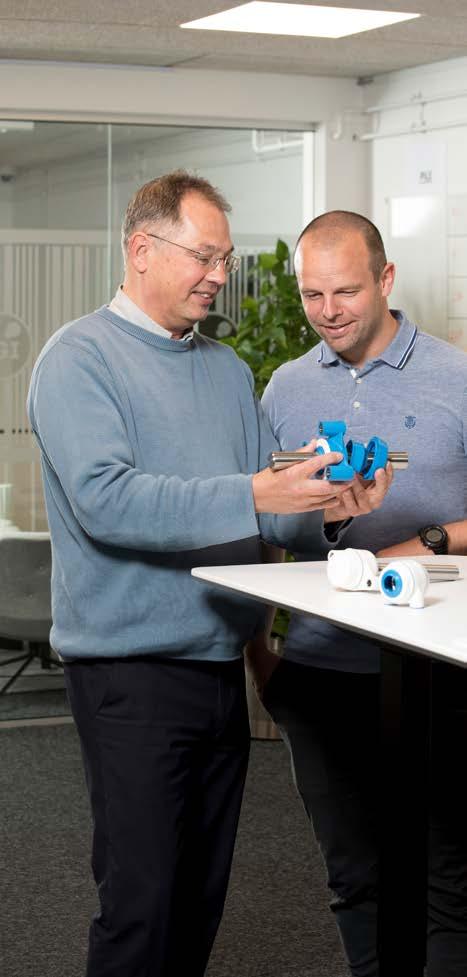
Optimizing compressed air systems
In April 2022, NGI undertook a comprehensive review of its compressed air system to identify and reduce leaks, a common source of energy inefficiency.


Project overview
Objective: Reduce energy consumption and CO2 emissions by addressing leaks in the compressed air system. Timeline: Review conducted in April 2022; improvements fully integrated by June 2022.
Key achievements
Energy savings: The optimization led to a reduction in annual energy consumption by approximately 70,000 kWh. Carbon reduction: The improvements translate to an annual saving of 9.8 tons of CO2e.
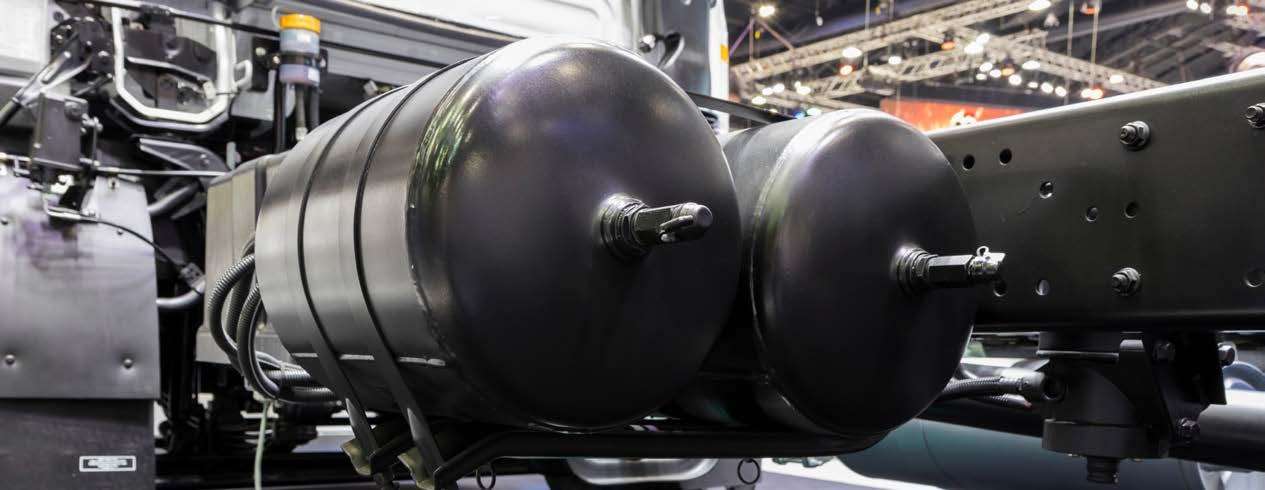
9.8
70,000
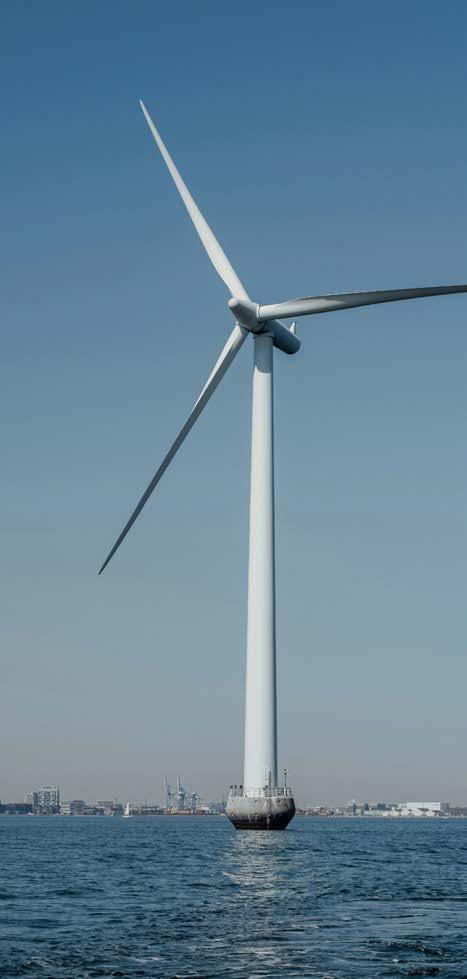

GHG emissions
As of March 2021, our facility in Denmark has been powered by 100% renewable electricity from Danish windmills. In 2020 and 2021, our GHG emissions data included only scope 2 emissions due to our use of district heating, which eliminates scope 1 stationary combustion emissions. Starting in 2022, we expanded our reporting to include scope 1 mobile combustion emissions, along with GHG emissions from our new facility in Germany.
Our scope 2 calculation now adheres to GHG Protocol standards by incorporating both location-based and market-based emissions. The graph illustrates combined scope 1 and market-based scope 2 emissions. For details on location-based scope 2 emissions, please see page 23
Between 2020 and 2021, our data shows a significant decrease of 216 tCO2e while increasing our volume. This reduction can be attributed to the procurement of 100% renewable electricity for our site in Denmark. Since then, our carbon footprint has declined by 19%, reflecting reduced energy use, despite the inclusion of mobile combustion emissions and our new site in 2022.
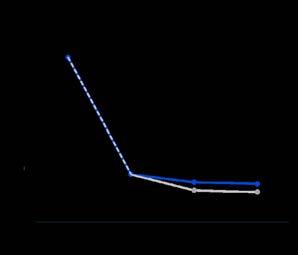
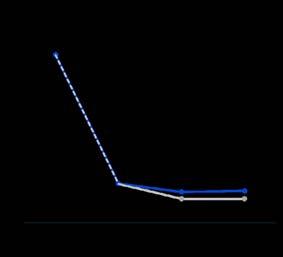
Note: The grey trend line shows the GHG emissions excluding emissions from mobile combustion.
VOC emissions
In our production facilities, solvents are primarily used for cleaning and adhesive applications during the fabrication of our end products. All chemical operations within designated ATEX areas are equipped with approved extraction systems to maintain VOC emissions well within legal limits. Our ongoing commitment focuses on reducing solvent use to enhance employee safety and minimize environmental impact.
VOC emissions are calculated based on the VOC content of each solvent used, considering the solvent consumption at our
facility in Denmark and, starting in 2023, our German facility. The VOC emissions from our German site are minimal and have had no significant impact on the overall trend.
Since 2020, we have observed an increase in VOC emissions, proportional to the rise in solvent quantities used. In 2023, we improved the accuracy of our VOC emissions calculations, which partly contributed to the increase in the indexed value from 2022 to 2023.


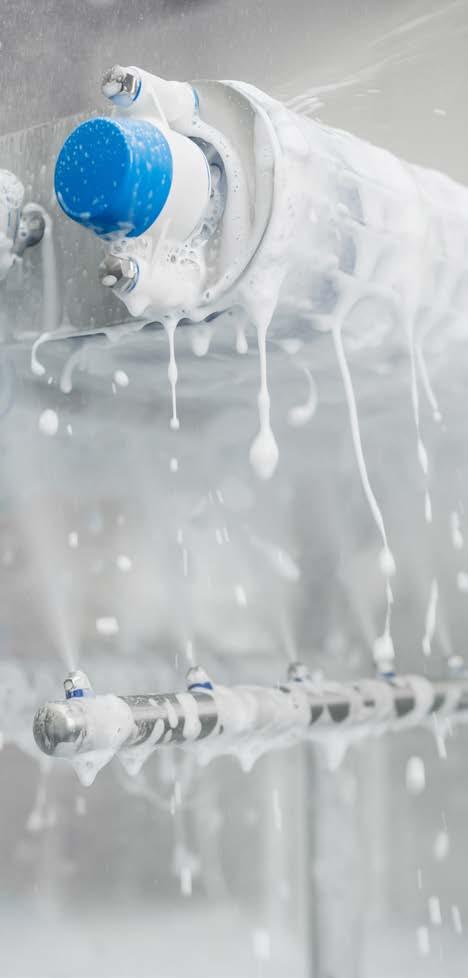
VOC emissions indexed to net revenues
VOC emissions

Water use
Despite our minimal operational water requirements, we have implemented a proactive strategy to manage water consumption. Over recent years, we have combined maintenance practices with strategic investments in our manufacturing facilities to ensure efficient water use.
Additionally, we prioritize using environmentally friendly alternatives to harsh chemicals to prevent water quality impacts. In cases where chemicals are necessary, we ensure proper treatment through certified partners.
Water consumption has shown an upward trend since 2020. The 19% rise between 2020 and 2021 is largely due to increased production volume and employee numbers, as well as the introduction of new production processes that utilize water. Since 2021, water consumption has increased by about 3% annually. At our site in Germany, this increase is attributed to a rise in the number of employees. The water use indexed to net revenues increased in 2023, because water use is not directly tied to net revenues.
Water use

Water use indexed to net revenues

Waste generation and disposal
We recognize the importance of effective waste management in promoting resource efficiency and contributing to the circular economy. Our waste management scope includes operational and office waste generated at our Denmark location and starting in 2023 the operational and office waste from our facility in Germany.
Our objective is to achieve and maintain a landfill prop ortion of 5% or below by 2025 while simultaneously reducing our overall waste generation.
We have made significant progress towards our waste management goals and can clearly see that our efforts are yielding positive results. Waste generation peaked in 2021 due to the removal of obsolete machinery and materials from our warehouse. As a result, total waste generated has decreased by 23% since 2021. The share of waste going to landfill has been reduced from 17% in 2020 to only 1% in 2023. Most of this reduction was achieved through recycling. To further minimize the proportion sent to landfill, in 2023 we diverted non-recyclable waste to incineration instead.
A lthough hazardous waste accounts for only 8% of our total, we prioritize safe disposal and aim for further reduction. Continuous improvement and innovation in waste management will be key to sustaining and exceeding our targets in the future.
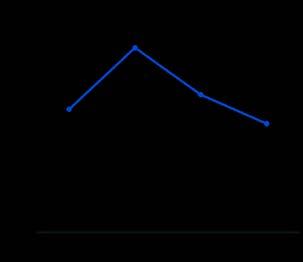
generation indexed to net revenues [t/MCHF]

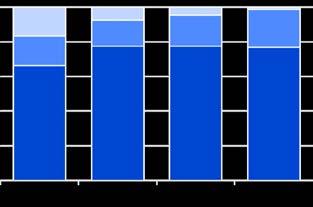

From waste to resource: Recycling waste rubber for machine feet production
As part of NGI’s sustainability initiatives, we have focused on reducing our waste products. One significant waste product is the surplus vulcanized rubber generated during the molding process.
Project overview
Objective: Explore recycling options for surplus vulcanized rubber to produce new machine feet.
Annual waste: Approximately 20 tons of waste rubber, constituting about 10% of the rubber used, was sent to an incineration plant.
Key developments
Recycling process consists of: freezing and grinding vulcanized rubber into a fine powder into the new rubber used for machine foot production.
Product specification:
• Machine feet with 50% recycled rubber content, achieving a potential of 31 tCO2e savings per year.
• Meeting mechanical standards equivalent to original feet.
• Ongoing efforts to improve the visual appearance of recycled rubber feet.
Challenges faced:
Potential carbon savings
31 tCO2e / year


• The technical facilities needed for carrying out this process are not available locally.
• The transportation to non-local recycling facilities will emit as many emissions as the CO2 savings of the project.
The project holds great promise, but we have decided to pause it until we have the necessary facilities established in the local area.
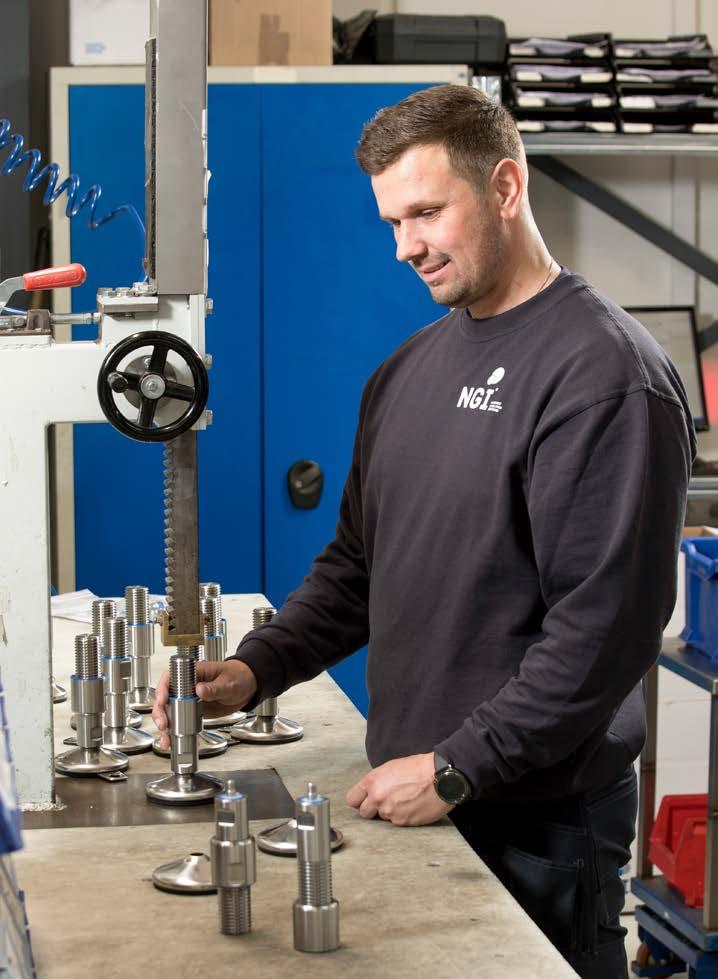
Scope 2 (indirect)
Data & index
Note: Renewable energy consumption includes on-site solar generation, 100% renewable electricity purchased and ethanol fuel.
Moovimenta
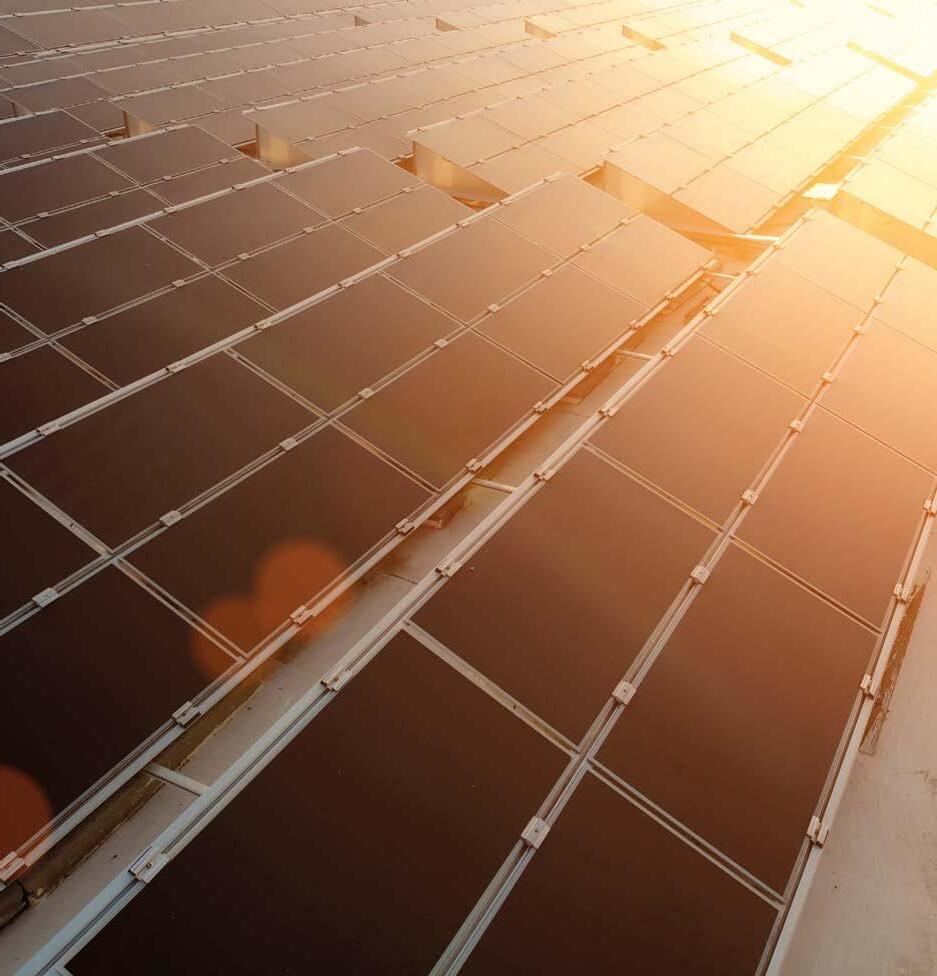
Data scope
In scope
Energy consumption, greenhouse gas (GHG) emissions, volatile organic compounds (VOC) emissions, water use, and waste generation.
Out of scope
• Sites with fewer than five full-time equivalent employees (FTEs).
• Energy use and GHG emissions (mobile combustion) from company vehicles in the 2020 and 2021 data.
Glossary
CSRD Corporate Sustainability Reporting Directive
F TE Full-time equivalent
GHG G reenhouse Gas
SDGs Sustainable Development Goals
UN United Nations
UNGC United Nations Global Compact
VOC Volatile Organic Compounds
Units
kg Kilogram
kgVOC K ilogram Volatile Organic Compounds
kWh K ilowatt hour
m3 Cubic meter
MCHF Million Swiss franc
MWh Megawatt hour
t Metric ton
tCO2e Metric ton carbon dioxide equivalent

